If it’s not clear already, this post will discuss The Sound of Music in great detail. You’ve had almost sixty years to watch it, so I’m not going to feel too bad about ruining the ending, but if you really don’t want to know what happens, maybe skip this letter! (It may also resonate more if you have seen the movie before.)
This is my absolute favorite movie. It is a comfort and a balm, something profoundly familiar. I notice something new with each rewatch, which I think is the gift of a deeply considered film.
What follows are many of the collected thoughts I have had over the years (decades!) that The Sound of Music has been a part of my life. (There are also some secondhand finds included at the end, because I’m not a monster.) I should mention that I have no formal education in or much informal knowledge of costume design! But sometimes it’s more fun to read these things from an absolute amateur who is just a superfan.
When we first meet Maria, she is singing, carefree in a long blue dress and apron. Her heavy black stockings and boots seem incongruous with her outfit and her surroundings, almost tethering her to the ground—an embodiment of the constant tether of the abbey.
We witness her struggle to adhere to the many rules of the abbey, and watch as she receives a gentle chastisement and understated (yet brutal) dismissal—“It seems to be God’s will that you leave us”—from the Reverend Mother, who sends her from the abbey to Salzburg* to be the new governess for the seven children of a widowed retired army officer.
Maria travels to Salzburg in a drab ensemble: a plain brown jacket and modest grey dress that symbolize how constrained her world has been thus far. Her humble dress, which blended in with her surroundings in transit, stands in stark contrast to the palatial great room where she first meets the Captain.
(Indeed, it doesn’t go unnoticed—her first conversation with the Captain concerns her outfit.)
She wears that same dress to dinner the first evening, along with the only piece of jewelry we see on her: this simple blue beaded cross necklace, a talisman from and reminder of her old world.
She soon acquires (I think the implication is that she’s sewn it all?) a new wardrobe, composed mostly of plain cotton dresses and dirndls in shades of blue and brown, fitted in the bodice and at the waist but full-skirted. They’re still modest, but much more form-fitting and cheerful than her original dress.
Maria’s fanciest dress makes its first appearance during the puppet show, but it quickly looks childish and simple in comparison to the dramatic blouse and sweeping skirt of the baroness. (This childishness is underscored by Maria’s participation in the puppet show while the baroness sits with the adults.)
In contrast to Maria, the baroness is studied and refined elegance from the start. Her presence makes Maria look like a child whenever the two are in frame together (most strikingly in the scene in Maria’s room, where Maria, dressed in only a slip, faces the baroness in full makeup and an evening gown.)
If Maria is starched cotton, the baroness is the finest of silks. Yet the baroness never quite fits in with the Von Trapps, even if the Captain is just as well-dressed as she is. She’s too louche, too of the moment—her clothes are meant for smoking cigarettes from a holder and wandering Vienna with her hot widower boyfriend, not playing a ball game in the yard with his children. Her heels are too high, her pearls too conspicuous, her hair too done. She’s too glamorous for the Captain’s life in Salzburg.
The only time the baroness seems at home in Salzburg is during the party she begs the Captain to throw for her. There, in her gold evening dress, she is surrounded by others who are just as dressed up as she is—it’s Maria who is the odd one out in the Von Trapp household that evening.
(And yet, it’s also Maria, in her plain cotton dress, with whom the Captain chooses to dance that night.)
After her emotional conversation with the baroness the night of the party, Maria leaves the Von Trapp household in the same outfit in which she arrived, having shed (literally, she undresses during their conversation) the dress that reminds her of the Captain, attempting to rewind the clock as if she’d never left the abbey.
When she eventually returns to Salzburg after her conversation with the Reverend Mother, she takes one last vestige of the abbey with her—the dress she reappears in is the same one we see on the postulant joining the abbey. (GOD, THE ATTENTION TO DETAIL IN THIS MOVIE!)
This dress is still cotton, but slightly more formal—it’s collared, and the skirt is closely fitted, embodying the maturity and independence that accompany her decision to leave the abbey for good. It’s also brighter and more triumphant than her older clothes, a nod to the renewed vision she has for her future.
After she learns about the Captain’s plan to marry the baroness, she is despondent. However (major side eye here), she does decide to put back on the dress that the baroness told her the “Captain couldn’t keep his eyes off [her]” in and wander the garden at night. OKAY MARIA. WE SEE YOU.
It’s in this dress that they finally kiss, after the baroness, ever glamorous and cutting, gives her blessing.
The children undergo a transformation, too. When we first meet them, they’re literally in uniform.
By the time the Captain returns from Vienna a month later, they’ve been “roaming about Salzburg dressed up in nothing but some old drapes” (the clothing Maria has sewn for them.)
They ditch their uniforms after this, dressing instead like models on the same catalog page—harmoniously, if you will. (Sorry! Had to have at least one pun in here!)
The only time the children’s uniforms resurface are after they’ve fallen into the water and upset their father, and have to change into dry clothing. Later shots of the Nazis in uniform marching through the streets of Salzburg are a dark reminder of what happens when uniformity and conformity are taken to an extreme.
Maria and Liesl are (finally!!!) differentiated in terms of maturity when we see them together before Maria walks down the aisle. Liesl’s dress is frilly and somewhat ill-fitting, like a child trying to fit into last year’s confirmation dress. Maria’s wedding gown is traditional in color and silhouette, but unmistakably grownup, a gorgeous textured silk tailored to her figure. A wedding is always symbolic of lost innocence, but this wedding also signals a loss of innocence on a much grander scale: Austria is no longer an innocent bystander in the war, and the Von Trapps as a family will soon come face to face with that reality.
Upon her return from their honeymoon, Maria looks even more grown-up, wearing sensible but still fitted skirt suits in thicker wools instead of girlish cotton dresses.
The color palette changes, too, from springier blues and greens to muddier yellows and browns, mirroring the cloudiness of their future in the context of the Anschluss.
Later on, as a matter of practicality, the family ends up in browns and blacks to literally blend in as they attempt to escape.
In my memory, Maria is holding one of the children’s capes as they make their way over the mountain, but this is a misremembrance. Maybe it’s that she’s helping Marta, or that she’s bringing up the back, but it’s interesting that I mentally assigned her this imagined baggage.
Regardless, what a transformation between the opening and closing shots! Maria is seemingly free and unencumbered when we first encounter her, but in reality, she is confined by the strictures of the abbey and isolated by her inability to conform. By the end of the movie, she’s acquired a fair amount of (theoretical) baggage, but she also has something valuable enough to want to escape for—and she’s not doing it alone.
The best kind of costume designers (IMO) give clueless viewers like me a familiar filter or lens through which the themes of a movie are not only reinforced but imbued with additional layers of meaning and symbolism. Dorothy Jeakins has done that for me with The Sound of Music.
THANK YOU FOR INDULGING ME. I promise there is no other movie (or book, or any piece of media) that I can talk about in a comparable way.** (This is also one benefit to an unmonetized Substack—I can subject my readers to something like this without feeling too guilty.)
Now for some present day inspiration…
I was devastated to learn that I recently missed the auction of THE ACTUAL DRESS THAT JULIE ANDREWS WORE IN THE MOVIE, which sold for $45,000 (lol, I guess I’m more devastated that I am not in a financial position to purchase a $45,000 dress) in July of last year.
However, there are still many options out there if you want to dress like Maria, from the very literal (custom Etsy cosplay, not what I was looking for today but good to know) to the more referential. All of the items below (except one! oops!) are under $200, and for the most part all are composed of natural materials (wool, silk, cotton.)
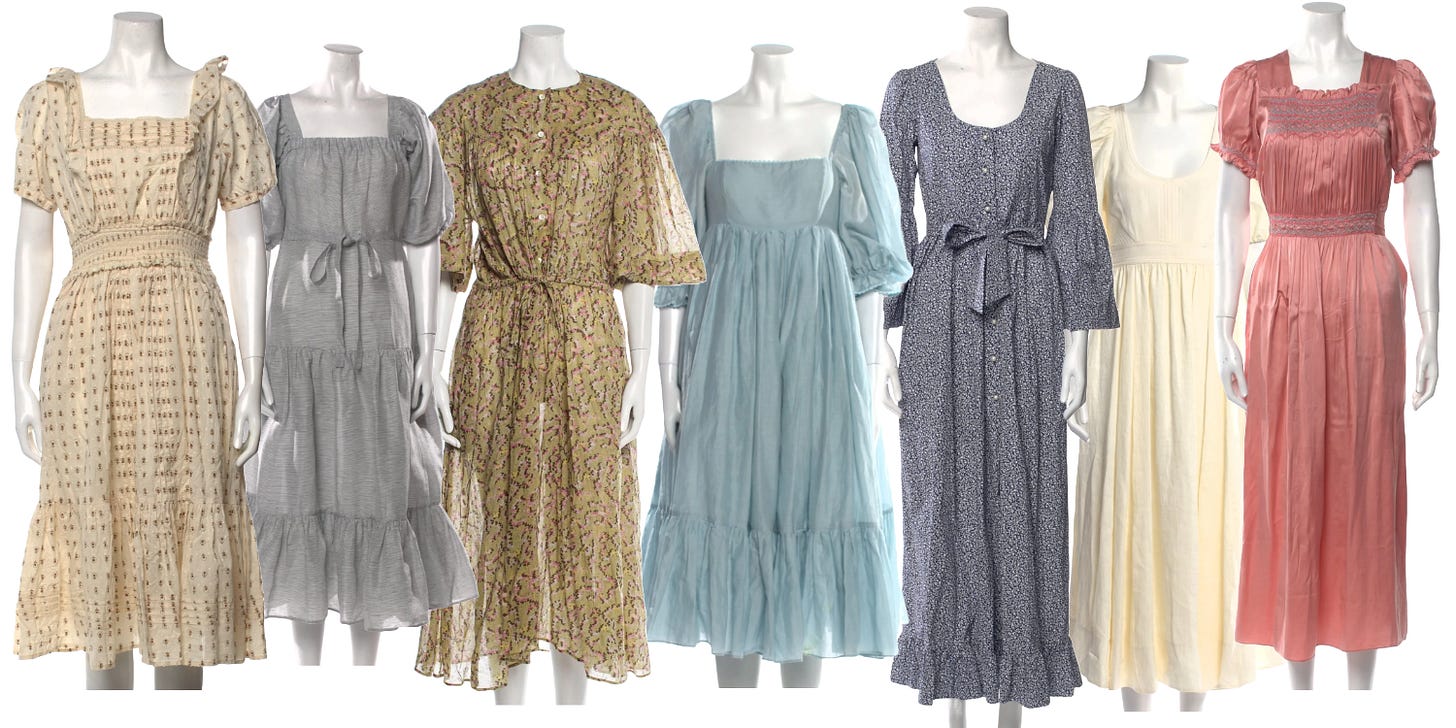

If you consider yourself more of a baroness (no shame!), even the more literal interpretations of her outfits don’t look quite as dated, as many elements of her look are still in style. Some baroness picks below:
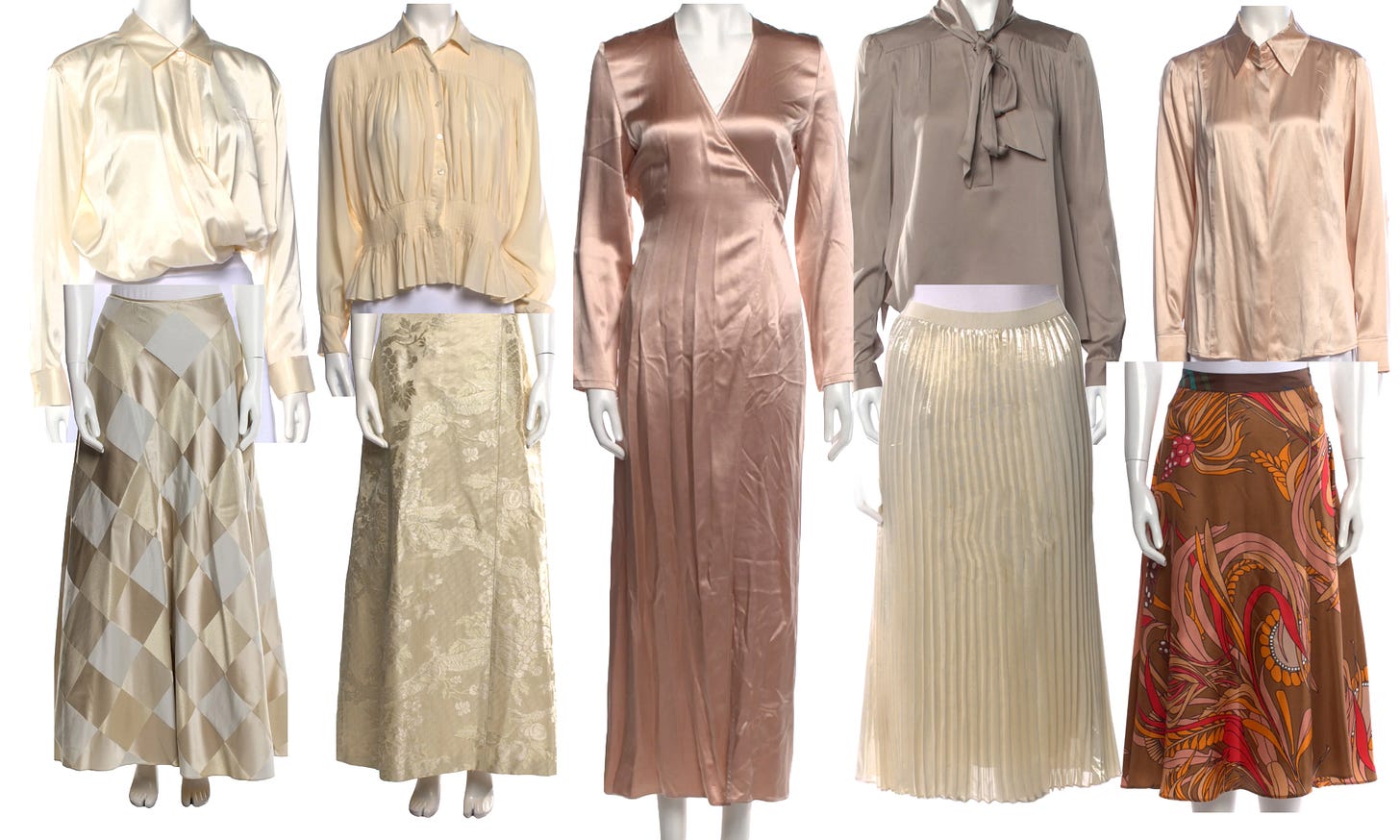
As always, if you buy one of the items in the newsletter—send pics!
<3 E
*Yes, I know it is technically right outside of Salzburg.
**I did not even touch the Captain’s wardrobe because I am clueless about menswear!





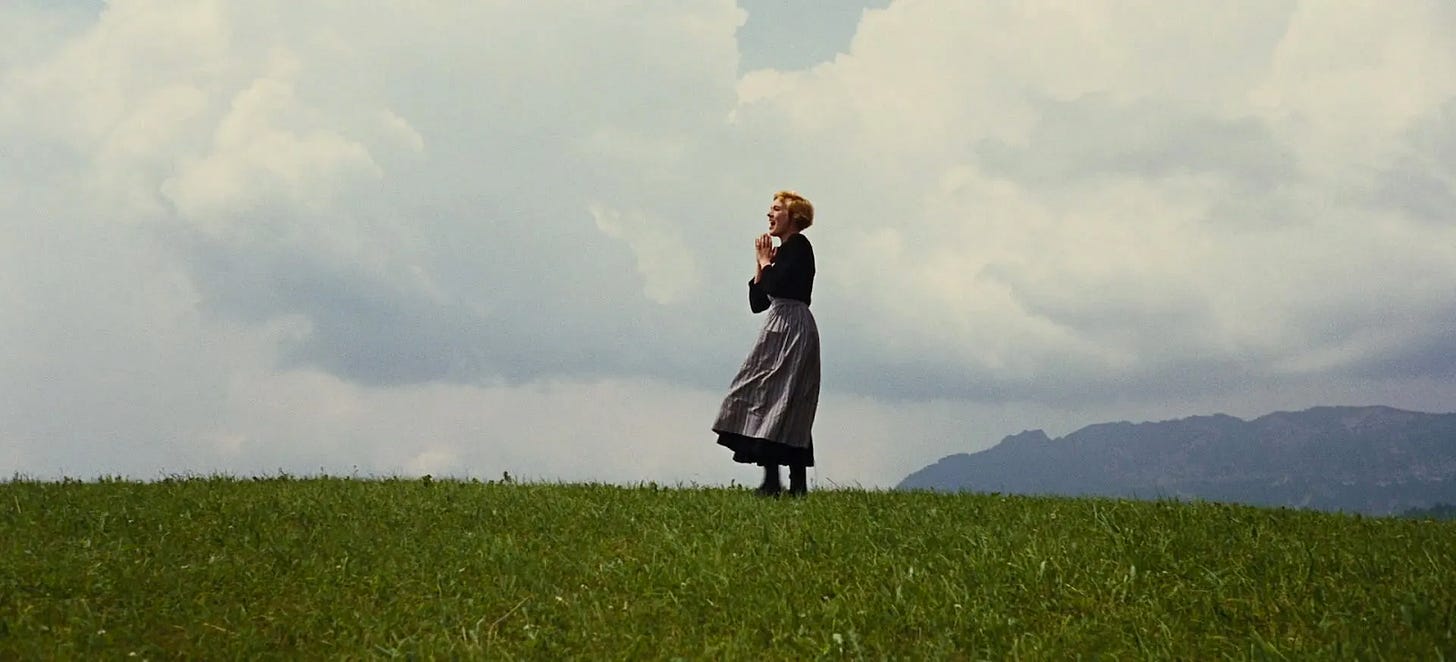


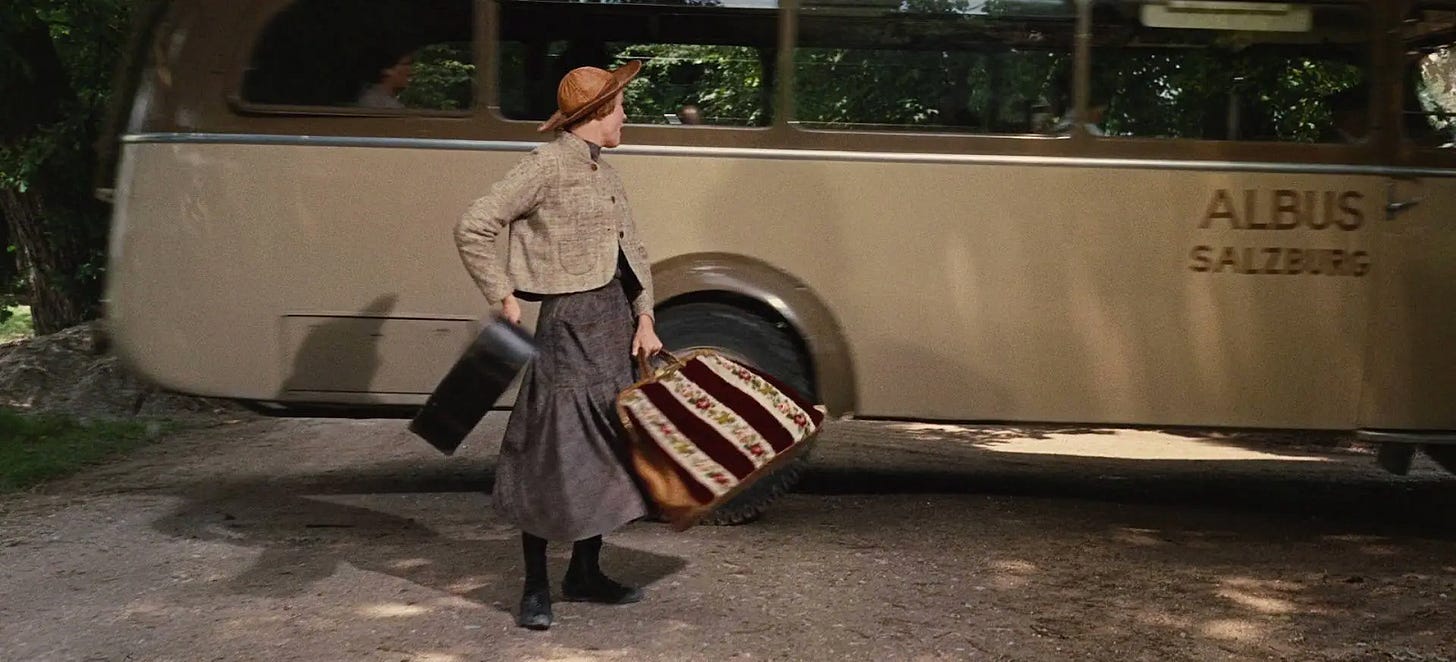





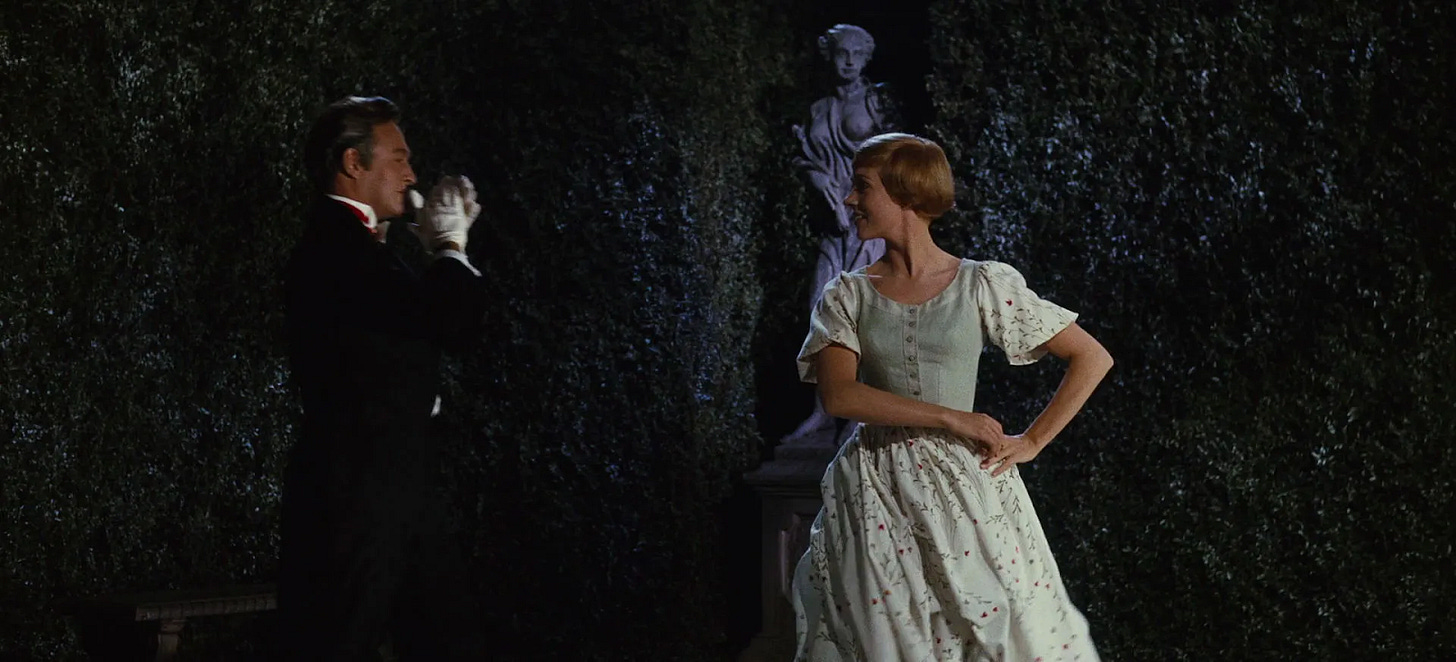





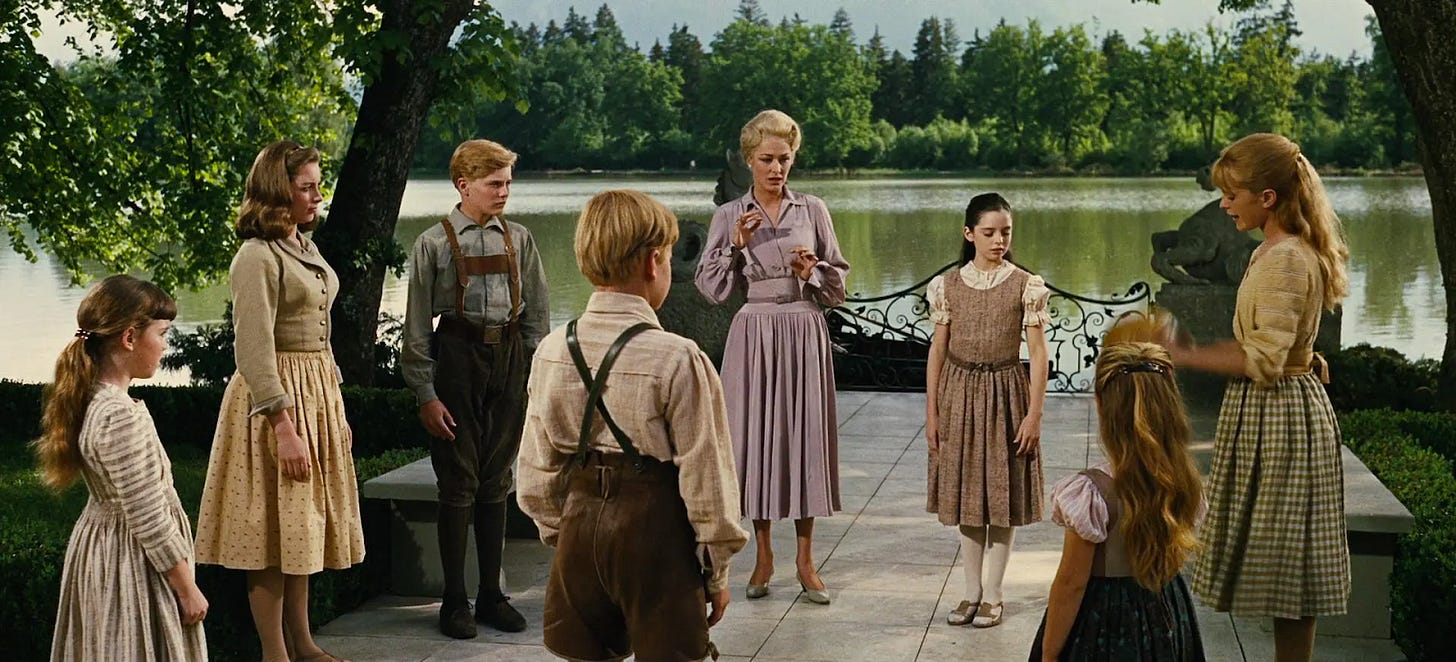


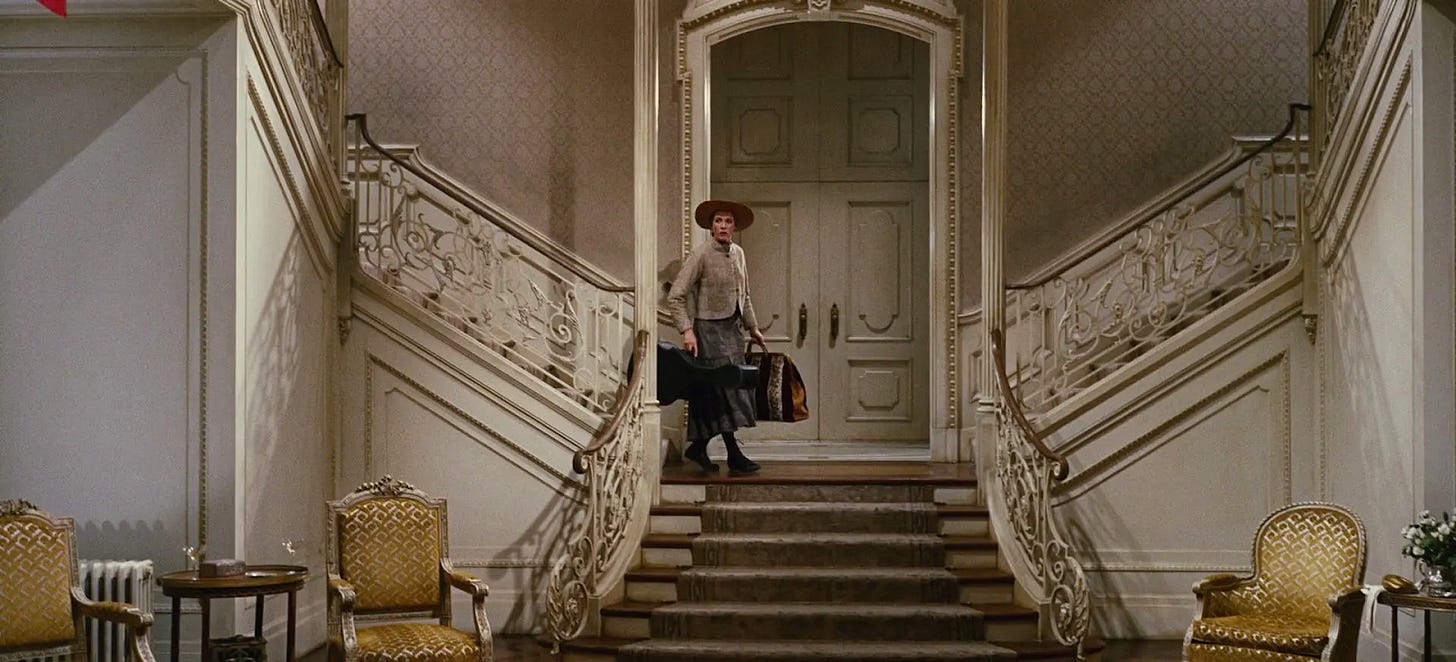





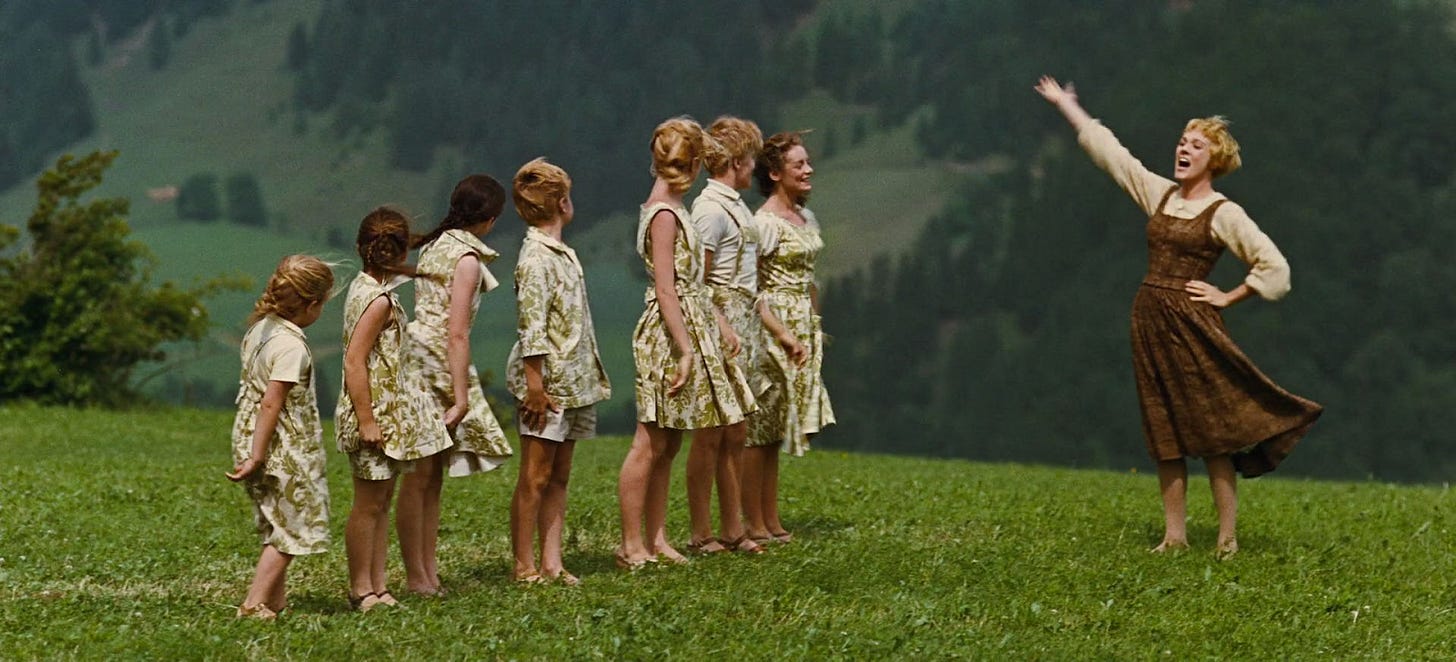



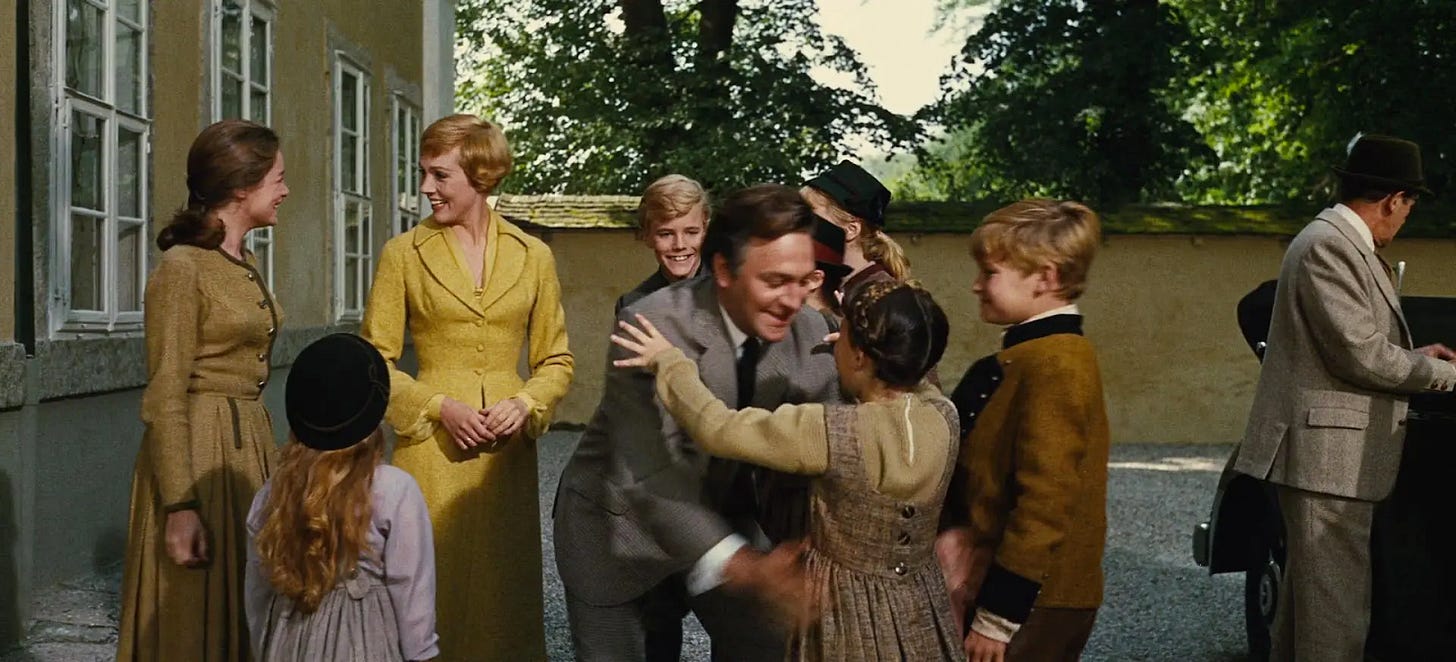




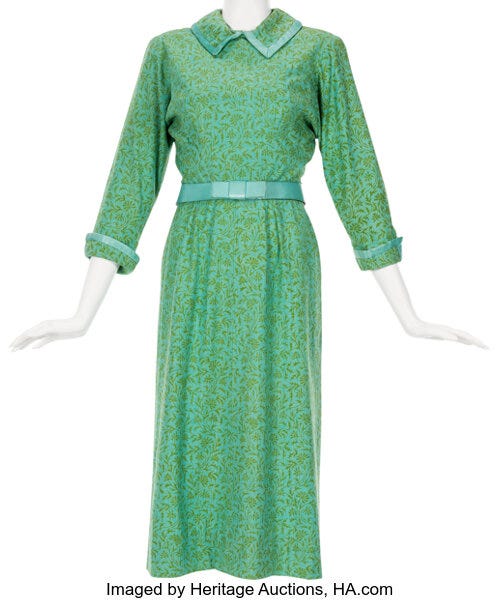
I love this post so much!!! (and please, do continue with the costume analyses on your personal obsessions, if you ever do another - I find them so much more engaging and interesting than 'here are 3583920 things to buy and wear as a costume' posts that proliferate on fashion substack)
I haven't watched TSOM in at least a decade but seeing all the costumes in detail like this really gives me a new appreciation of how good it is and why it spent like 30 years across generations being the Christmas movie of choice (first for mum, then me).
re: Grandmere, I am still slightly regretful that the version in the Princess Diaries movie isn't the eccentric tattooed-eyeliner Sidecar-drinking snob I know and love from the books. Book Grandmere was so much more of a <i>character</i>- she was delightful, and while Julie Andrews is delightful by default as Nice Grandmere, it still feels like a missed opportunity.
!!! TSOM is a childhood favourite of mine too (legit internally screeched when I heard the first notes of 7 Rings), it used to be the go-to Christmas movie in the 90s but I never paid attention to the costumes, this is so eye-opening in the best way. So much detail on all of this!
also I adore Julie Andrews, the only reason why I don't mind the nicening of onscreen Mary Poppins and Grandmere compared to how abrasive they could be in the books, is because they're played by her.